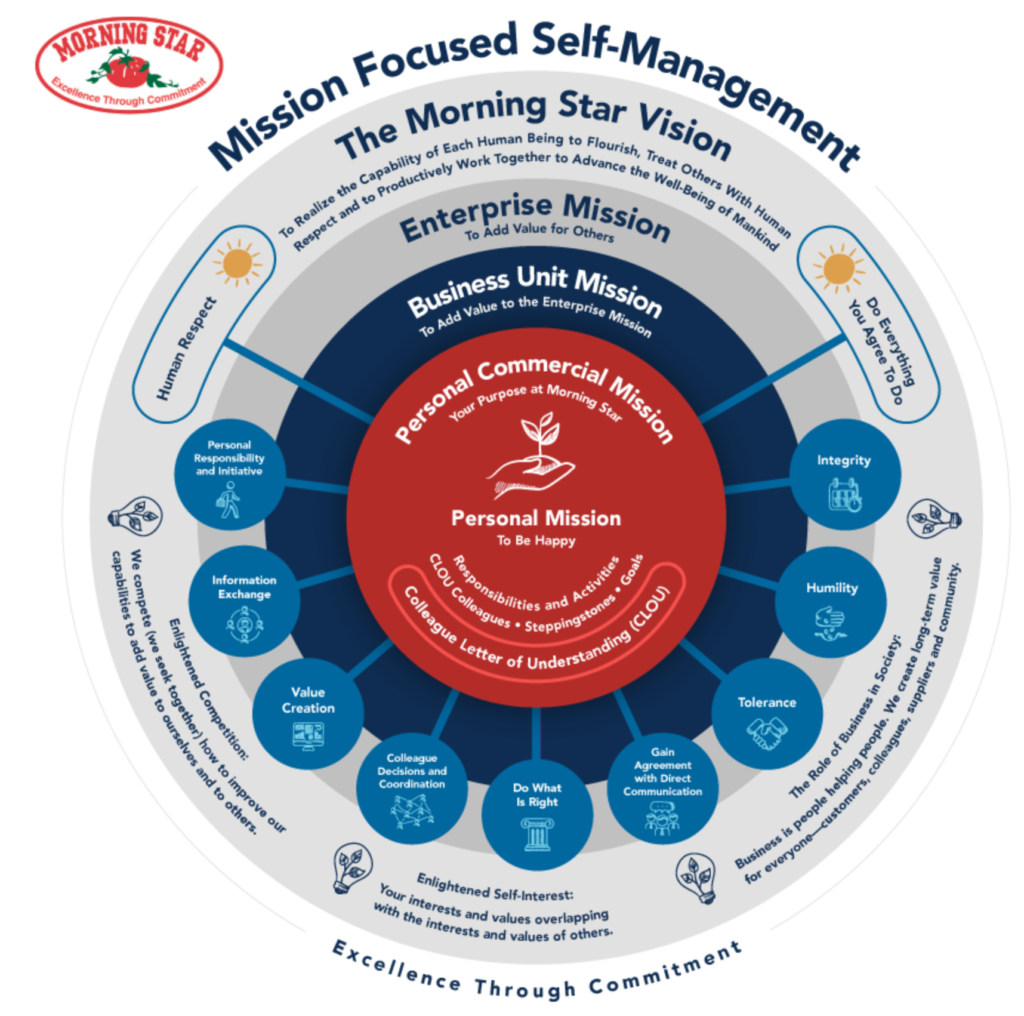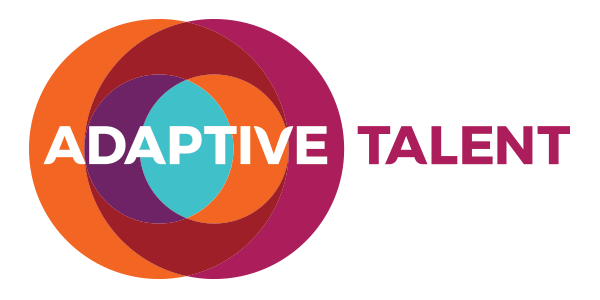Gary Hamel pens a really interesting
overview of
Morning Star’s approach to leadership and management in this month’s HBR. I recommend reading it if you are interested in employee engagement, organizational health, and productivity.
An enterprise built for decision making.
The Morning Star Company, and its enterprises, operate three tomato processing facilities in Central California, processing around 30% of the California crop, plus tomato transplant growing, transplanting, agricultural technology innovation, harvesting, and trucking operations. Employment is approximately 550 year-round and over 2,500 seasonal colleagues with annual sales exceeding $800 million. We are known worldwide for our innovation and integrity.
We are organizationally structured through a system we term Mission Focused Self-Management. Our company is operated by colleagues without titles or an appointed hierarchy of authority. Leadership is dynamic and situational and is taken based on competency and integrity. Each Colleague has a personal commercial mission and is the manager of their mission. They must think on their feet and solve problems quickly.”
Here’s a picture describing the elements of it:

In short, the company – one of the world’s largest processors of tomatoes – has evolved to have essentially very few people managers, instead choosing to spend those dollars on higher wages and investments in organizational capital. Where a traditional company would have a manager : employee ratio (or a “span of control”) of say 1:10, they instead have mini business units run entirely by the employees themselves, each of whom has a service level agreement with the other team members, and collectively with other business units that interact with them. Instead of people doing tasks that are relevant to their roles and titles, the company allows people to self-select the tasks they believe they’re best at / want to do, and to negotiate with their colleagues to ensure all work areas are covered by someone. Since everyone on your team has to sign off on your deliverables and service level agreements (with super clear metrics and dates, etc) at an employee level and collectively, it leverages social pressure for people to contribute at a high level and to assess others fairly. What comes around goes around in spades at Morning Star.
So who’s in charge? In short, everyone is a manager because people are constantly assessing their deliverables, communicating / collaborating with each other, and helping their team meet deliverables. More difficult tasks go to the more senior employees because others recognize they’re the best ones to take on those tasks (equality of treatment, not capability). Where mentoring is required – often the “job” of a people manager – employees instead ask for help as needed, and their peers, often the most senior and knowledgeable, offer advice. In fact, the employees elect eight representatives to help combine peer reviews of everyone’s work and knowledge areas to set pay levels for the year. If you know more, and contribute more in the eyes of your peers, then essentially they nominate you for more pay.
The system is not for everyone, especially manager types who “add” value by controlling the work of others and acting as a communication control point. Apparently they have almost a 50% voluntary attrition rate for experienced hires after nearly two years because the change is too great for some people. But for others, the change is liberating and it would be difficult to go back. Employees report that having full access to every aspect of enterprise systems (I’m sure a few of you just felt light headed), with twice monthly finance and deliverables reporting to ensure accountability, is a game changer for them intellectually and emotionally. They’re learning more and are able to more rapidly form and dissolve projects and structures to deliver value to the business, versus having to go “up” the chain of command to get change done. If your plans no longer make sense, renegotiate with your internal customers. Less managers means less concern for bigger teams under their control, abuses of power, and likely better decisions since people have to prove their point through negotiation and metrics. Your project won’t get funded if it doesn’t have sufficient ROI relative to other possible projects; it’s the best aspects of a marketplace merged with a high performance, high engagement culture.
Something like this takes a significant effort culturally to achieve and maintain, and there is huge investments in training and business processes to keep things moving along so attempting to move your organization towards something like this will take time and a very thoughtful design,
strong leadership, and lots of trust. That said, it’s very energizing to see something like this working so well – they’re compounded rate of growth is several times higher than the industry average – because it’s a beacon for leaders who want to shed the old school ways and leverage lean management techniques to achieve better agility, customer responsiveness, and higher morale.
—


